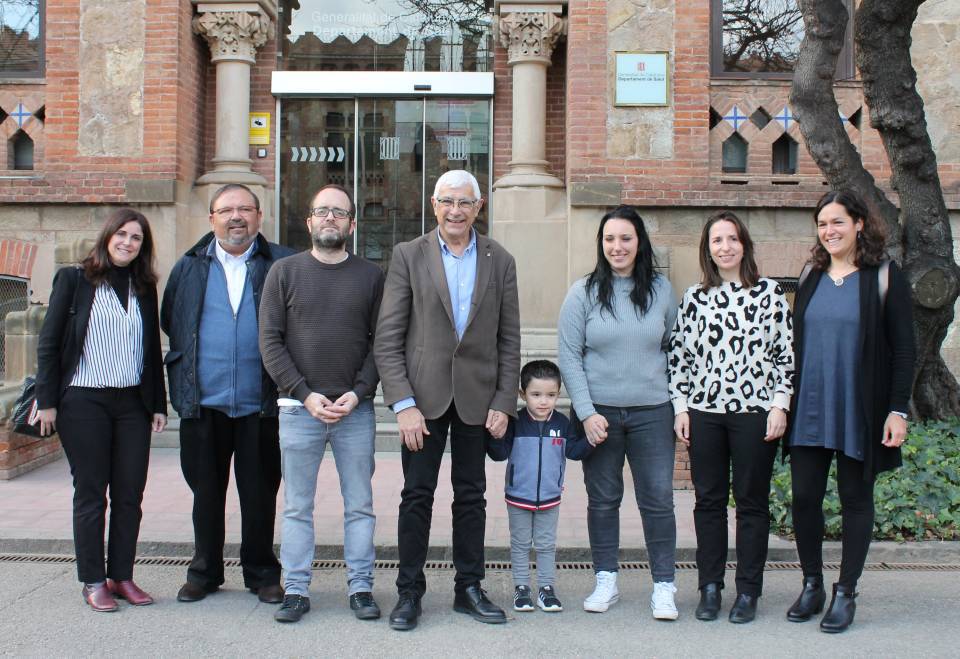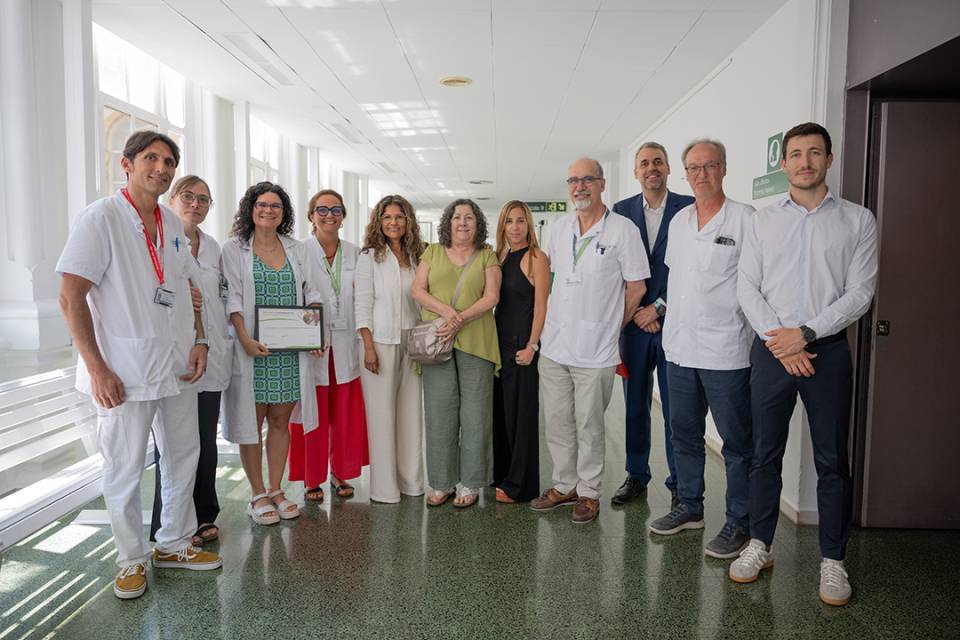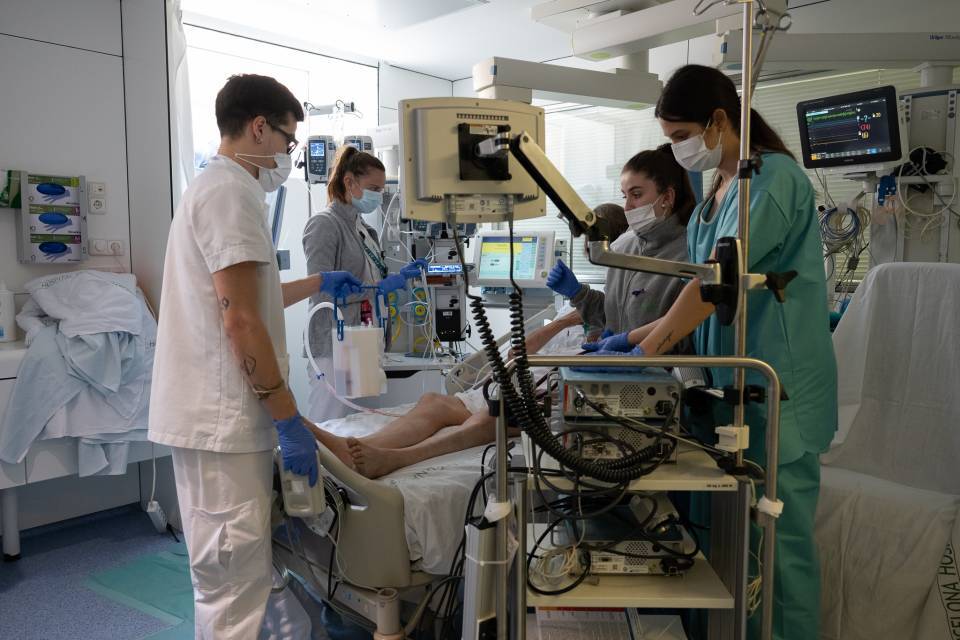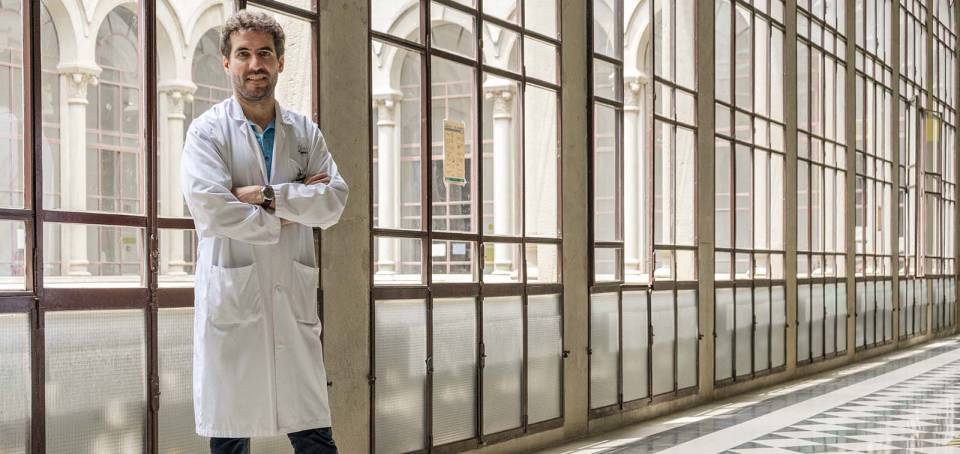In 2017, the Catalan public health system became the first in Europe to incorporate universally into its Neonatal Screening Programme the detection of the Severe Combined Immunodeficiency (SCID) Syndrome, popularly known as ‘bubble baby’ disease. Since then, this inclusion has allowed six children with this disease to be detected, and all have been able to receive curative treatment. Now that 350,000 newborns have been screened, the data show that the incidence of bubble baby syndrome is 1 in 56,000 live births. These data coincide with those obtained in the USA, where the programme began in 2008.
The heel prick test consists of making a pinprick puncture in the newborn’s heel between 24 and 72 hours after delivery to collect a few drops of blood, which are applied to piece of filter paper. The samples from all babies born in Catalonia are analysed at the Hospital Clínic. At present, these samples are used to screen for 25 potentially serious conditions. These include severe combined immunodeficiency, the most severe of the primary immune deficiency diseases, genetic disorders of the immune system. At the Hospital Vall d’Hebrón they treat all the newborns diagnosed with SCID through neonatal screening, and carry out haematopoietic stem cell transplants. “These babies do not produce lymphocytes properly, their immune system does not function, so they cannot protect themselves from infections caused by viruses, bacteria or fungi. This means that the common cold could kill them and, without proper treatment, they could die before their first birthday”, explains Dr. Andrea Martín, head of the SCID neonatal screening programme in the Paediatric Infectious Diseases and Immunodeficiencies Unit at the Hospital Universitari Vall d’Hebron, the referral centre in Catalonia for the diagnosis and treatment of babies with severe combined immunodeficiency disease.
The time factor is vital in the diagnosis, and the detection of SCID based on the study of the heel prick test has proven to be crucial. Without neonatal screening, bubble baby cases are detected too late, when the babies are between three and six months old, when the baby has already had an infection and vital organs have been affected or are very weak. In these cases, the probability of survival is 40-60%. “However, if we detect the disease within a few hours of delivery, when the baby has not yet had any infection, the probability of survival increases to 95% with the appropriate treatment”, points out Dr. Andrea Martín.
Meanwhile, Dr. Ana Argudo, doctor in the Inborn Errors of Metabolism Section-IBC in the Biochemistry and Molecular Genetics Service (Biomedical Diagnostic Centre) at the Hospital Clínic, where the Catalan Neonatal Screening Laboratory is located, explains: "In the laboratory, we analyse 250 samples a day from apparently healthy newborns, who could have SCID, among other things. For the early detection of SCID, before the newborn has any infection, a biomarker for the production of T-cells, TRECs (T-cell receptor excision circles), is quantified with the blood that was spotted onto filter paper and using molecular biology techniques. Newborns with SCID have extremely low or absent TRECs, and, when we have this result, we contact the Vall d’Hebron Referral Unit as quickly as possible to tell them there is a positive SCID case. This allows them to call in the family in order to carry out the appropriate tests to confirm or rule out the diagnosis. The smooth, good, two-way communication between both hospitals has been key to the success of this Programme”.
What happens when a positive case is detected?
When a positive case is detected, an immediate action protocol is activated, which includes all the teams involved, both at the Hospital Clínic and the Hospital Vall d’Hebron. The Paediatric Infectious Diseases and Immunodeficiencies Unit at the Vall d’Hebron is in charge of confirming the diagnosis. If a positive case is confirmed, there are two treatments that can provide these babies with an immune system: haematopoietic stem cell transplantation (from the bone marrow, peripheral blood or umbilical cord) and, in some selected cases, gene therapy. However, if the cause of the disease is the absence of the thymus gland, it is also possible to perform a transplant of this organ. This is only carried out in two centres: Great Ormond Street Hospital in London and Duke University Hospital in New York.
The first bubble baby diagnosed with a heel prick test, who is now five years old, was admitted to the Vall d’Hebron Paediatric Haematopoietic Stem Cell Transplantation Unit and kept in isolation for two months in order to avoid any possible infections before he received an umbilical cord blood transplant. In this case, the blood from the umbilical cord has a high number of stem cells and this is the key to developing the immune system of the transplanted child. Today, this child has a normal immune system and has been cured of the disease. This was also the treatment given to the subsequent 4 cases detected after 2017 in Catalonia.
Vall d’Hebron offers all the treatments through the European Reference Networks (ERNs)
In the case of the sixth and last bubble baby diagnosed thanks to neonatal screening, the absence of the thymus gland was observed and he was transferred to London where he received a thymus gland transplant, which was successful. The thymus is the gland that stimulates the production of T-cells to fight infections. Great Ormond Street Hospital in London is the only centre in Europe to carry out this transplant. It consists of taking the thymus tissue that is removed in children undergoing heart surgery and transplanting it in the recipient’s quadriceps muscle in order to restore the patient’s thymic function.
Since the Hospital Universitari Vall d’Hebron is one of the European Reference Networks (ERNs) on rare diseases, this ensures that patients can be offered all treatments, such as gene therapies or thymus transplantation, even to patients with ultra-rare diseases. “This allows us to share resources and knowledge with other first-level European hospitals”, points out Dr. Andrea Martín.
The incorporation of screening for severe combined immunodeficiencies by performing heel prick tests on all newborns born in Catalonia is a clear example of the teamwork between the patients' associations (ACADIP), foundations (BCN-PID Foundation), scientific societies (Catalan Paediatrics Society and Catalan Immunology Society), hospitals and institutions.
The Hospital Clínic, referral hospital for the analysis to detect bubble babies
The Hospital Clínic has the only laboratory where the analysis of the samples from the Catalan Neonatal Screening Programme is centralized, in order to detect 25 diseases in all the newborns in Catalonia.
The laboratory is pioneering and a national and international benchmark for the detection of SCID. It was the first in Europe and the inclusion of this disease led to the incorporation of molecular biology techniques at the Neonatal Screening Programme Laboratory. Moreover, recently other markers have been evaluated through tandem mass spectrometry to complement the screening for this disease, which widens the range of detection of SCID. The Hospital Clínic is accredited by the ISO 15189 standard for all the diseases it screens for. After over 6 years of experience and with the expertise it has gained, the Hospital Clínic is collaborating with other laboratories in Spain and the rest of Europe to analyse samples from children suspected of having SCID, as well as to validate new methodologies for the detection of this disease. It has also received professionals from other programmes in Spain and the rest of Europe who want to train in order to include this disease in their own neonatal screening programmes.




